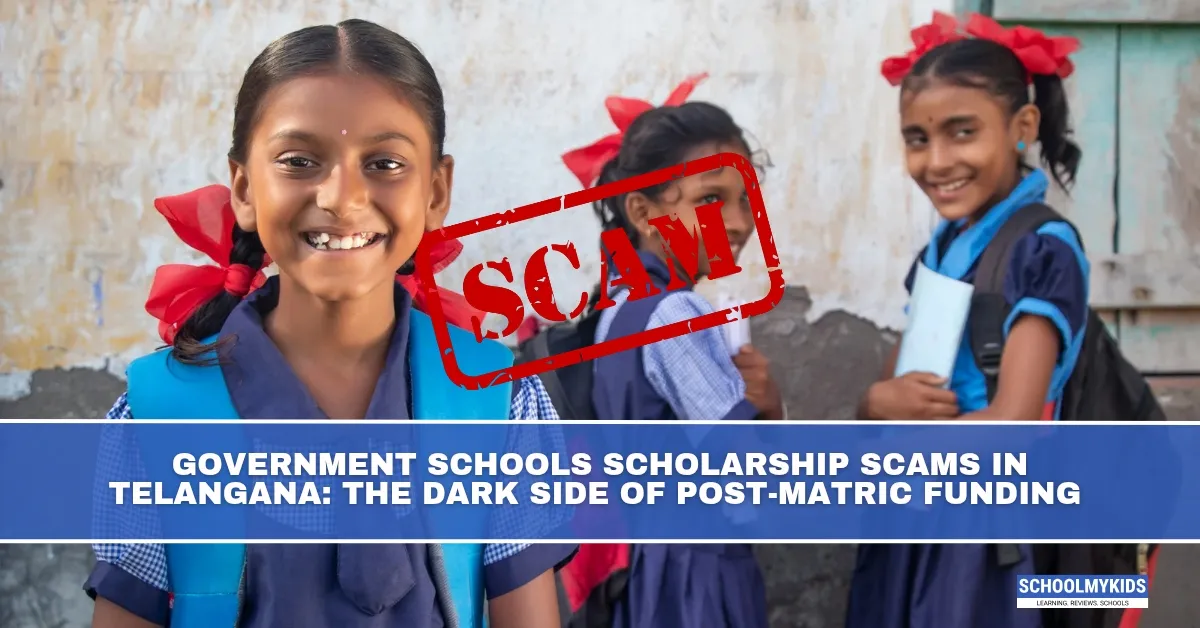The Post-Matric Scholarship (PMS) system exists to keep poor and marginalised students in school and college. In theory, it’s simple: the government allocates funds, eligible students receive stipends or fee reimbursements, and economic barriers to education fall. In practice, long-standing operational gaps, perverse incentives, and criminal collusion have turned parts of the PMS apparatus into a pipeline for fraud — diverting funds from the classroom into private pockets and hollow institutions. This article maps the recent scams, exposes the common weaknesses that allowed them, and summarises the current state of investigations and prosecutions.
What has happened recently — a quick, documented timeline
- Central probes and FIRs: The Central Bureau of Investigation registered an FIR probing alleged misuse of minority scholarship funds that identified hundreds of suspect institutions and an estimated loss in the hundreds of crores — a probe that has exposed fake beneficiary lists, forged documents and collusion between institutions, bank officials and middlemen.
- Enforcement Directorate action: ED investigations into the “post-matric scholarship” fraud have found fake enrolments and the manufacture of bogus beneficiaries. The agency has provisionally attached assets linked to accused parties and invoked money-laundering provisions after tracing fund flows that appear designed to launder or hide diverted scholarship money.
- State vigilance and audits: Telangana’s government ordered vigilance inspections and surprise audits across professional colleges after portal anomalies and complaints surfaced; teams were dispatched to verify whether listed colleges actually functioned, whether beneficiaries existed and whether the claimed infrastructure and staff were real.
- Ongoing distress for legitimate students: While probes and attachments proceed, many deserving students continue to wait for reimbursements, producing protests and appeals from community leaders — a parallel harm where enforcement and slow redress both leave genuine claimants stranded.
How the scam worked — the anatomy of the fraud
- Fake institutions and ghost students: Academically non-functional trusts, shell colleges and even empty buildings were entered into scholarship portals as if they were legitimate institutions. Administrators created fictitious enrolments and submitted applications for non-existent students. When funds were credited via DBT or other mechanisms, controllers siphoned them into bank accounts they controlled.
- Forged documentation and corrupted gatekeepers: Scanned mark sheets, bogus attendance registers, forged ID proofs and collusion with bank officers or middlemen created a façade of legitimacy. Because many verification steps were paperwork-based, they were easy to fake. Investigations repeatedly show administrative collusion as the decisive enabling factor.
- Portal vulnerabilities and weak reconciliation: The switch to electronic disbursal (DBT and scholarship portals) exposed both a blessing and a weakness. Digital transfers made large-scale diversion traceable in principle, but imperfect reconciliation, lax cross-checks between portal data and exam/attendance records, and poor inter-departmental data sharing left gaps exploited by fraudsters. Audit flags often came only after anomalous patterns were obvious.
- Perverse incentives and hollow oversight: Colleges under financial stress, private operators chasing quick cash, and understaffed oversight agencies created an incentive structure where short-term misreporting paid better than genuine compliance. The cost of getting caught — historically low — made fraud a business decision.
Key numbers and charges (where available)
- The CBI’s 2023 FIR alleged misuse involving 830 institutions and losses estimated at about Rs 144 crore in the minority scholarship programme for 2017–22.
- ED press releases and reporting show asset attachments and money-laundering probes tied to post-matric scholarship diversions; provisional attachments in multiple actions total several crores in value.
Case updates — who’s under probe and what’s changed
- Federal agencies intensified action after audit flags and whistleblower tips. The CBI’s FIRs named dozens to hundreds of suspicious institutions; ED followed with PMLA-linked probes where fund layering was evident. Several provisional attachments and raids have already occurred.
- State administration moved to operational audits: Telangana’s Chief Secretary ordered vigilance raids and inspections across colleges to verify beneficiary lists, infrastructure and admission compliance. These inspections are ongoing and intended to produce rapid corrective action and stop further disbursements where malpractice is confirmed.
- Legal churn and uneven outcomes: Some earlier investigations saw court interventions, acquittals or criticisms of probe quality; criminal cases take years and outcomes vary depending on evidence trails and prosecutorial rigor. That history shapes both public distrust and political sensitivity.
Root causes — why this keeps recurring
- Data mismatch and weak verification: Portals accept bulk uploads without real-time cross-checks with exam boards, UDISE/UDISE+ education databases, or biometric verification, making large-scale fakery feasible.
- Administrative overload and low accountability: Education and minority-welfare departments are under-resourced for forensic audits and risk-based verification, so frauds that require detailed checks go undetected until patterns become obvious.
- Political and institutional capture: Where influential intermediaries or institutional managers benefit from diverted funds, local pushback to audits is common. This raises the political cost of enforcement and slows corrective measures.
- Perverse short-term incentives: For some private institutions and managers, scholarship revenue is a predictable income source that substitutes for poor fee collections — creating a financial motive to game the system.
What needs to change — short and medium term fixes
- Real-time cross-validation: Integrate scholarship portals with education board results, UDISE records and Aadhaar/biometric verification where legal. Payments should only be released after automated cross-checks clear.
- Risk-based audits and third-party verification: Random physical audits plus risk profiling focused on institutions with sudden spikes in claims, unusual beneficiary clusters, or lack of verifiable infrastructure. Independent third-party spot checks reduce capture risk.
- Stronger penalties and fast-track prosecution for fiduciary fraud: Faster case processing and visible punitive measures raise the expected cost of cheating and deter organized diversion.
- Protect and prioritise genuine claimants: While investigations proceed, set aside emergency disbursal windows for verified students and create an ombudsman for grievance redressal to avoid harming legitimate beneficiaries.
Final assessment
Telangana’s scholarship controversies are not an isolated “one-off” theft. They are the predictable outcome of a system that combined badly designed digital disbursal mechanisms with weak verification, local capture and low enforcement costs. Recent CBI and ED actions represent real progress — but enforcement is slow and many deserving students still wait. Patching process, strengthening data linkages, and prosecuting middlemen and institutional managers must be simultaneous priorities; otherwise, audits and asset attachments will feel like symbolic theatre while the next fraud quietly ramps up.









Be the first one to comment on this story.